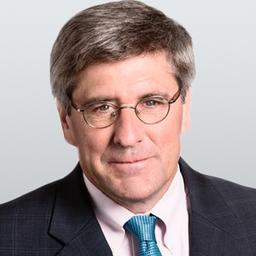Repeat after me, class: Growth does not cause inflation. Write it on the blackboard 100 times.
For decades, the economics profession has been trying to tell us all just the opposite. They keep shoveling out the dumbest economic concept of all time: the Phillips Curve. This was the lame-brained “theory” by neo-Keynesian economists of the 1960s and ‘70s that to slow inflation, the Federal Reserve needs to raise unemployment and slow down economic growth.
The whole concept of an inverse relationship between unemployment and inflation blew up when it was put into practice in the mid-1970s and the result was rising inflation and rising unemployment. Then in the 1980s and ‘90s, with free-market supply-side policies in place, we had low inflation and low unemployment.
Over the past 40 years or so, if there’s a relationship between unemployment and inflation, they tend to run together more often than in an inverse relationship.
As my colleague at the Committee to Unleash Prosperity, David Simon, put it, “The historical evidence shows the opposite of the Phillips Curve theory: Increasing inflation in a particular year increases the unemployment rate in the following year—and that reducing inflation in a particular year reduces the unemployment rate in the following year.”
This concrete evidence should be the end of the myth of the Phillips Curve. Except that we’ve learned in recent years that when the left’s theories are contradicted by the real world, they stick with the theory. If the laboratory mice aren’t behaving as predicted, the problem isn’t the theory; it’s the mice.
Which brings us to the high priests in the temple of the Federal Reserve Board—who gave us 9.2 percent inflation last year. Now what are they doing? Still singing out of the discredited Phillips Curve hymnal. Just listen to Jerome Powell explaining the Fed strategy back in August: “Getting inflation sustainably back down to 2 percent is expected to require a period of below-trend economic growth as well as some softening in labor market conditions”—i.e., fewer people working.
Then there was this from Fed Gov. Christopher Waller explaining the latest Fed decision on Nov. 28: “While I am encouraged by the early signs of moderating economic activity in the fourth quarter, inflation is still too high. I am increasingly confident that policy is currently well positioned to slow the economy and get inflation back to 2 percent.”
This is dangerous nonsense. As economist Louis Woodhill has explained it, “It is as if the Fed is trying to stop a careening car headed over a cliff by turning on the windshield wipers.”
We aren’t anywhere close to real full employment in this country. We still have 5 to 6 million working-age men out of the workforce—a vast majority of whom could and should be working. The economy’s average growth post-COVID over the past two years has averaged less than 2 percent when the historical average is in the 3 percent to 3.5 percent range. So the Fed is delivering that below-trend gross domestic product they’ve been hoping for.
Some of the problem is the mandate for the Fed as dictated by Congress to deliver a U.S. economy that achieves “stable prices and full employment.” But this is redundant. One of the surest ways of achieving full employment is precisely to stabilize prices. Instead, the more than 300 doctorate economists at the Fed and the Board of Governors are under this weird spell that full employment actually creates inflation.
The Fed should have long ago tossed out the Phillips Curve sophistry. They’ve completely misdiagnosed the inflation problem. Bidenflation wasn’t caused by too many people working or any sudden spurt of economic production since 2021. It was fueled by runaway government spending, debt, and a vastly expanded Fed balance sheet, which pipelined excess dollars into the economy. And so the Fed seemed to be squelching private-sector growth at the same time we needed more of it.
As Arthur Laffer put it, “If the economy produces more apples, the price of apples goes down, it doesn’t go up.” The reason that the pro-growth movement is called “supply-side economics” is that the goal of any well-run economy should be to increase the production and “supply” of goods and services.
This Fed is for private-sector austerity, but they are fine with government growth. Half of the new jobs in the economy this year have been in government or health care. Unlike Fed chairmen of the past, including Paul Volcker and Alan Greenspan, who routinely criticized Congress for its addiction to debt-financed spending, Jerome Powell rarely jawbones President Joe Biden or Congress to spend less money. This would be far more effective than raising interest rates and slowing down the economy, which only makes the cost of the federal government’s borrowing even more expensive.
What Americans want right now is prosperity. Neither Congress nor the Fed is taking us there. Then they wonder why 70 percent of voters are unhappy.







